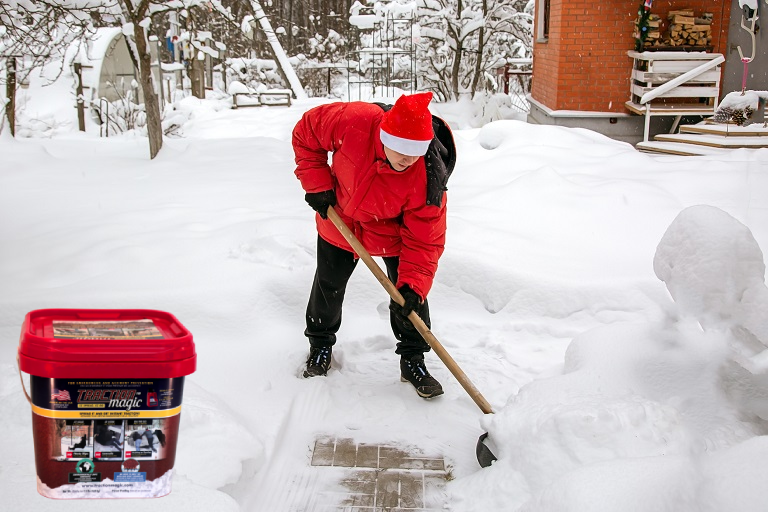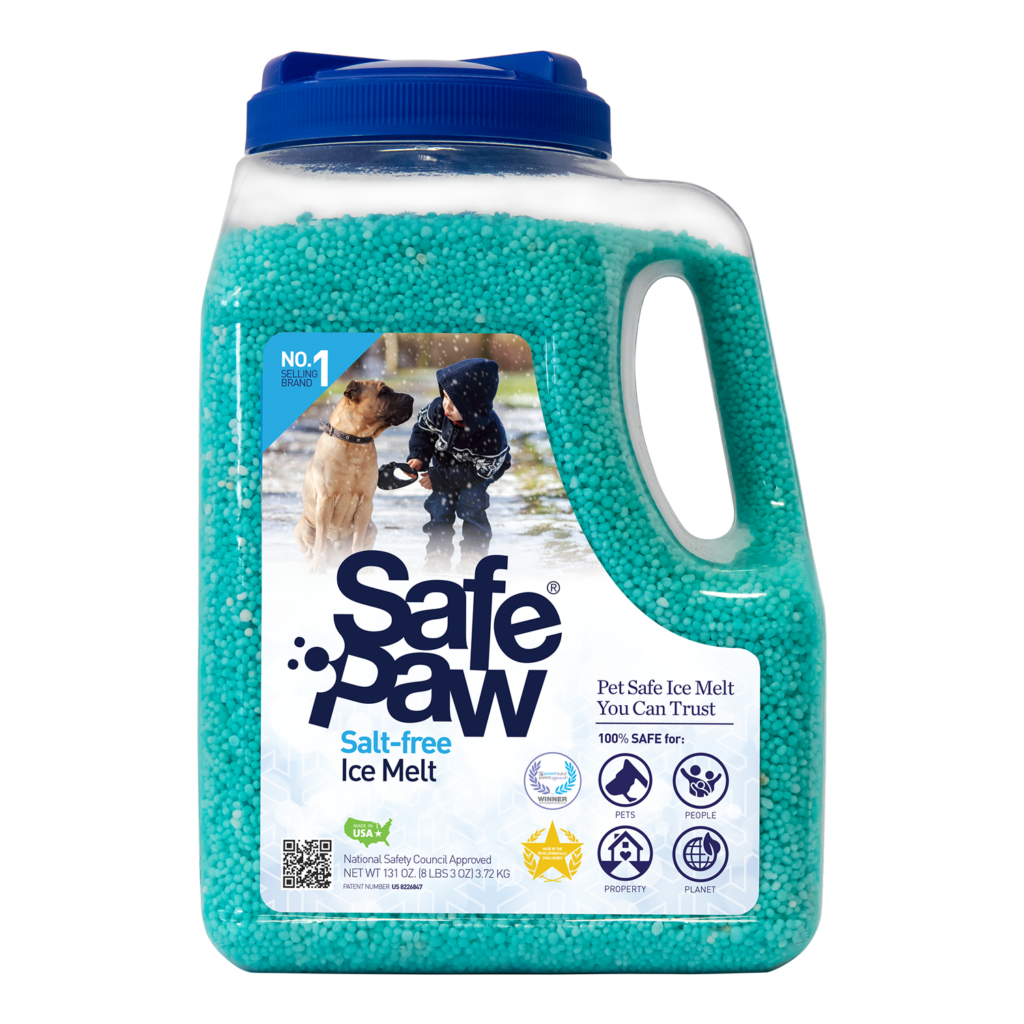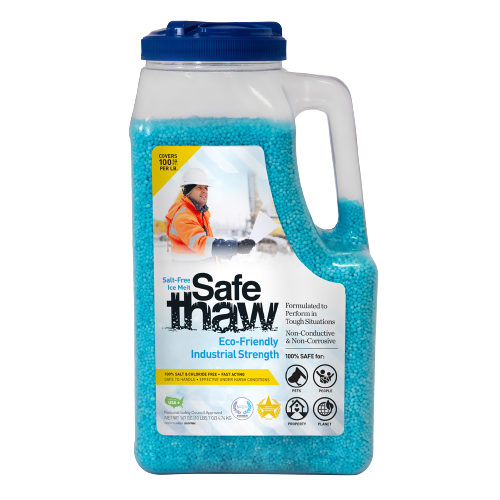Can New Concrete Be Treated With Ice Melt?

Ice melts are supposed to be used on concrete to prevent it from freezing. But what if you just poured your new concrete? Should you use ice melt on it?
For your safety and the safety of your concrete, here is what you need to know:
Get ready for winter with Traction Magic instant grip on snow and ice
Ice Melter Safe For Concrete
This is an often overlooked, but critical piece of advice. Ice melt can damage the surface of concrete and mortar that’s just been laid down. If you do use ice melt on new concrete, it could cause cracking or other damage to the surface that will make your project look worse than if you hadn’t used ice melt at all.
Safe Paw is safe to use on your concrete that is older than 12 months.
Ice melt products like Safe Paw are Non-chloride ice melt products that don’t contain any chloride (i.e., chlorine) or magnesium. They contain other natural elements. They’re safer for pets and the environment to handle. It is also safer for metal surfaces like concrete slabs and steel railings. It is an ice melter safe for concrete.
Get ready for winter with Traction Magic instant grip on snow and ice
Cars Should Be Kept Off New Sidewalks And Driveways For Three Days After They Are Poured.
When a new sidewalk or driveway is poured, it’s important to keep cars off for at least three days. Concrete needs time to cure and dry before you can use it. It also needs time to settle, shrink and harden properly so that no cracks form later on. If you drive over the freshly poured concrete right away, your car tires will compress the surface and force any moisture out of it—this makes your sidewalk or driveway more susceptible to cracking in the future.

Clean Up Any Leftover Ice Melt Once The Snow And Ice Have Melted.
Once the snow and ice have melted, clean up residual ice melt. Wear gloves when cleaning and be sure to wash your hands after handling the product. If you can’t use a broom, use a shovel to scoop it off the concrete.
Get ready for winter with Traction Magic instant grip on snow and ice
Black Ice and Snow: Why Ice Melters May Harm New Concrete
When winter strikes, we all look for quick solutions to clear our driveways and sidewalks—but black ice and snow bring more than just slipperiness. If you’ve recently poured new concrete, you might be tempted to treat it like older surfaces and sprinkle an ice melt product on top. Think twice. New concrete, generally less than a year old, is especially vulnerable to chemical reactions caused by traditional chloride-based ice melts.
Most ice melt products contain magnesium or calcium chloride, which aggressively lower the freezing point of water—but at a cost. These compounds can infiltrate concrete pores, causing cracks, spalling, and long-term erosion. Instead of rushing to apply rock salt, consider safer alternatives. For instance, Safe Paw is an ice melter safe for concrete, even around 12-month-old surfaces, thanks to its chloride-free formula and pet-safe ingredients.
You should also keep heavy vehicles off new driveways for at least 72 hours. Fresh concrete needs time to settle and strengthen. Driving over it prematurely forces moisture out of the slab and can lead to premature cracking. Winter can be brutal, but protecting your concrete investment is a long-term win.
Black Ice and Snow: Should You Use Traction Control on Ice?
Along with protecting concrete, many wonder: should you use traction control on ice or in conditions where black ice and snow are present? The answer depends on the situation. Traction control helps prevent your wheels from spinning by reducing engine power. On ice, this can keep your vehicle from slipping—but it may also limit your ability to “rock” the car free if you’re already stuck.
So, should I use traction control on ice when driving cautiously on black ice? Generally, yes. However, if you’re stuck or need to gain momentum, you may need to temporarily disable it to get moving. Understanding how your vehicle’s systems work is just as vital as knowing which ice melter won’t harm your surfaces.
In such cases, traction agents like Traction Magic can be a powerful complement. Instead of melting ice, they provide immediate grip—even on dangerous black ice—without harming concrete or the environment. Products like these work especially well for newly poured areas where you need traction without chemical side effects.
Conclusion
When dealing with black ice and snow, it’s not just about clearing a path—it’s about doing it safely. Using a chloride-heavy ice melt on new concrete can severely reduce its lifespan. Combine that with improper use of vehicle features like traction control, and you’re courting winter trouble. Instead, opt for a concrete-safe ice melter like Safe Paw, and consider traction-enhancing solutions like ice Traction Magic for when immediate grip is necessary. Smart preparation keeps both your concrete and your commute safe.
Other Ice Melt Products
Safe Paw
The Original and the #1 Pet and Child Safe Ice Melt for over 20 years. Guaranteed environmentally safe – will not harm waterways and sensitive wetlands. Safe Paw can change how winter affects our planet.

Safe Thaw
Imagine an ice melt you can put down and never worry about. It won’t harm pets, kids and your property. That’s Safe Thaw. Unlike anything else on the market, Ice and Snow Management You Can Trust.
